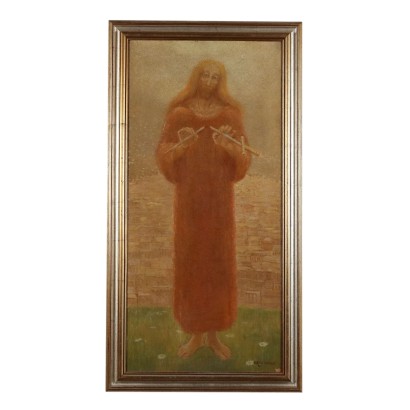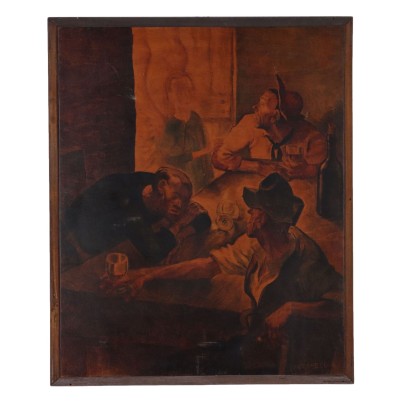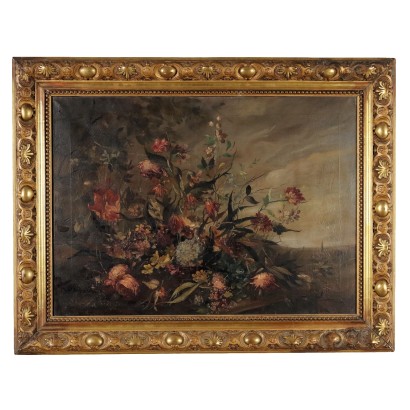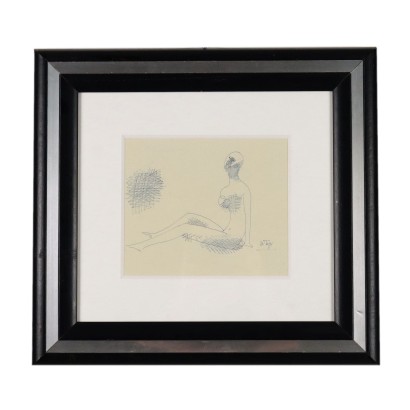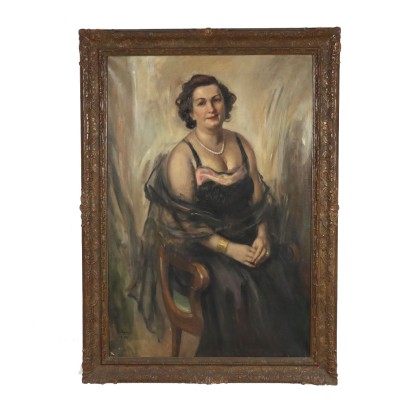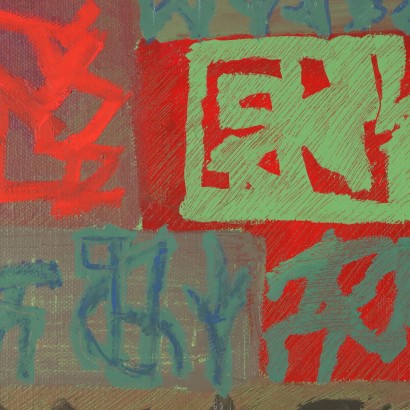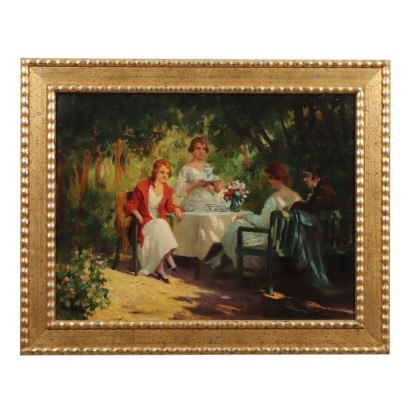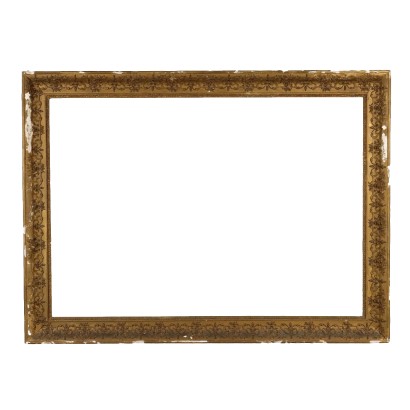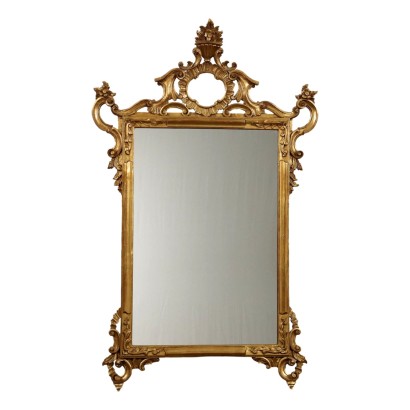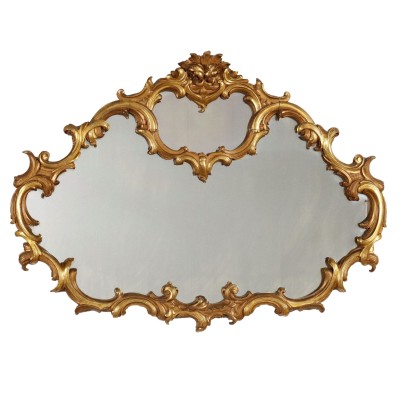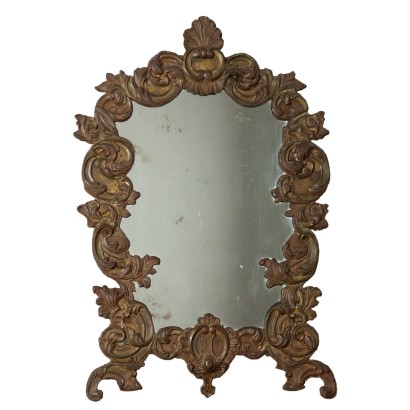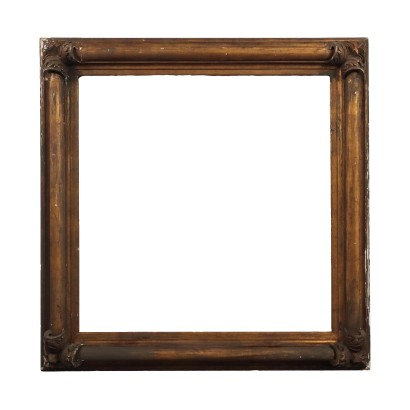Modern Painting A. Helios Gagliardo Oil on Canvas 1917 - Figure Breaking the Sword, 1916
Features
Figure Breaking the Sword, 1916
Artist: Alberto Helios Gagliardo (1893-1987)
Artwork title: Figura che spezza la spada
Age: 20th Century / 1901 - 2000
Subject: Human Figures
Artistic technique: Painting
Technical specification: Oil on Canvas
Description : Figura che spezza la spada
Oil painting on canvas. Signed and dated lower right. A youthful work by the well-known artist, it outlines a figure who, against the background of a city, breaks his sword: the man, whose iconographic features and tunic refer to the imagery of the figure of Jesus, with his gesture seems to want to invite peace. The Genoese painter and engraver Alberto Helios Gagliardo, in addition to a large production of landscapes and portraits, many in a symbolist key, also includes several works with religious, mythological or symbolic content. The work is presented in a frame.
Product Condition:
Product in good condition, has small signs of wear. We try to present the real state as fully as possible with photos. If some details are not clear from the photos, what is stated in the description applies.
Frame Size (cm):
Height: 142
Width: 74
Depth: 5
Artwork dimensions (cm):
Height: 120
Width: 60
Additional Information
Artist: Alberto Helios Gagliardo (1893-1987)
Born in Genoa in 1893, Alberto Helios Gagliardo attended the Accademia Ligustica of Genoa, a student of Tullio Quinzio. He exhibited regularly at the Genoese Promotrice (1913-1959); under the influence of Previati he painted with pointillist technique. Between 1919 and 1921 this technique evolved and expressed itself in the execution of works with a symbolist theme. Gagliardo joined the Pro Cultura Artistica group alongside the poet Edoardo Firpo and several painters. In 1923 he took part in the International Exhibition of Monza Pro cultural art, which included among its members Guido Galletti, Francesco Messina, Armando Vassallo, as well as Edoardo Firpo, with whom he became friends, drawing direct inspiration from the contents and the ideal climate of the his poetry. In 1922 he held a large solo exhibition within the Genoese Promotrice. In 1923 Domingo Motta encouraged him to undertake the activity of an engraver, which gradually took on an ever greater importance in his production: from 1923 to 1978 he produced almost two hundred etchings. In 1925 Alberto Helios Gagliardo presented a series of etchings at the Exposition internationale des arts décoratifs etindustrials modernis in Paris. From 1928 he regularly participated in the Venice Biennale until 1938, returning in 1942, as well as taking part in all the annual exhibitions organised, between 1929 and 1944, by the Ligurian section of the Fascist Fine Arts Union, where he exhibited paintings and engravings. He was named Academician of Merit at Ligustica in 1930, and in 1938 director of the school of engraving and woodcut at the Accademia Ligustica; he exhibited, in the same year, at the International Contemporary Art Exhibition held in Genoa. Between 1940 and 1960, he participated in numerous exhibitions in Italy and abroad. His evolution in the artistic field then led him to approach the themes dear to the Italian twentieth-century pictorial movement. Landscape and portrait painter, he also creates paintings with symbolic, mythological and religious themes. Gagliardo died in Genoa in 1987.Age: 20th Century / 1901 - 2000
20th Century / 1901 - 2000Subject: Human Figures
Artistic technique: Painting
La pittura è l'arte che consiste nell'applicare dei pigmenti a un supporto come la carta, la tela, la seta, la ceramica, il legno, il vetro o un muro. Essendo i pigmenti essenzialmente solidi, è necessario utilizzare un legante, che li porti a uno stadio liquido, più fluido o più denso, e un collante, che permetta l'adesione duratura al supporto. Chi dipinge è detto pittore o pittrice. Il risultato è un'immagine che, a seconda delle intenzioni dell'autore, esprime la sua percezione del mondo o una libera associazione di forme o un qualsiasi altro significato, a seconda della sua creatività, del suo gusto estetico e di quello della società di cui fa parte.Technical specification: Oil on Canvas
The oil painting is a painting technique using powder pigments mixed with bases in inert and oils.Other customers have searched:
Arte Novecento, dipinti del 900, olio su tavola, pittura olio su tela, arte 800, pittura antica, arte contemporanea, quadro del '900, quadro grande, quadro olio su tela..
Se sei un appassionato d'arte, non perderti i nostri approfondimenti sul Blog Arte Di Mano in Mano e su FineArt by Di Mano in Mano - Arte:
Leggi di più
Ecco alcuni tra i principali articoli:
Vedute
Falsi nell'arte antica
Un messaggio di fiducia per ripartire
La potenza espressiva dell'arte figurativa etiope
Breve Storia del Collezionismo
Giorgio Upiglio, maestro dei libri d'artista
Matthias Withoos detto "Calzetta bianca"
San Rocco pensaci tu - Classic Monday
Ecco alcuni esempi dell'arte del Novecento più bella che puoi trovare da noi:
I Raccoglitori di patate - Lavoro estivo - Augusto Colombo, 1935
I Taglialegna - Lavoro invernale - Augusto Colombo, 1933
Il lavoro femminile, Contardo Barbieri, 1954 ca.
Sapevi che l'arte può essere anche un ottimo investimento (e non solo per grandi portafogli)?
L'Arte tra Collezionismo e Investimento
FineArt: Arte come investimento
Dai un'occhiata alle nostre rubriche di divulgazione sull'arte:
Epoche
Lavorazioni e tecniche
Mostre ed Eventi
Protagonisti
Leggi di più
Ecco alcuni tra i principali articoli:Vedute
Falsi nell'arte antica
Un messaggio di fiducia per ripartire
La potenza espressiva dell'arte figurativa etiope
Breve Storia del Collezionismo
Giorgio Upiglio, maestro dei libri d'artista
Matthias Withoos detto "Calzetta bianca"
San Rocco pensaci tu - Classic Monday
Ecco alcuni esempi dell'arte del Novecento più bella che puoi trovare da noi:
I Raccoglitori di patate - Lavoro estivo - Augusto Colombo, 1935
I Taglialegna - Lavoro invernale - Augusto Colombo, 1933
Il lavoro femminile, Contardo Barbieri, 1954 ca.
Sapevi che l'arte può essere anche un ottimo investimento (e non solo per grandi portafogli)?
L'Arte tra Collezionismo e Investimento
FineArt: Arte come investimento
Dai un'occhiata alle nostre rubriche di divulgazione sull'arte:
Epoche
Lavorazioni e tecniche
Mostre ed Eventi
Protagonisti



